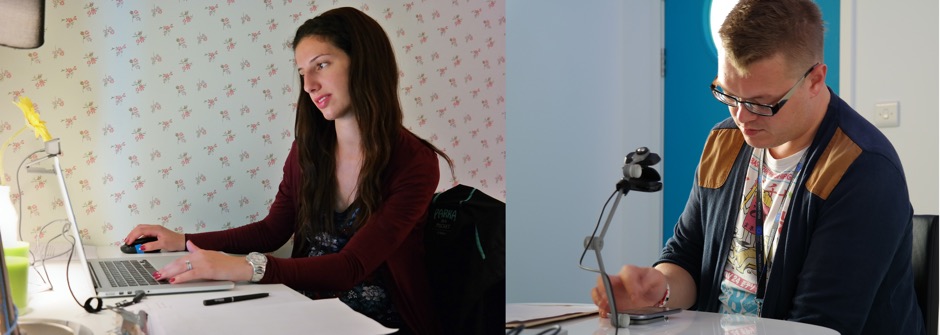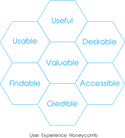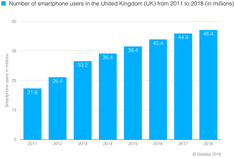Get your FREE Mobile UX Checklist for World Usability Day

Happy World Usability Day!
We’re very excited today because it’s World Usability Day (and we are Keep It Usable after all). It’s a special day that aims to raise awareness of the importance of usability and educate people about what usability is. It brings together professionals and non-professionals throughout the world with one aim:
To ensure that technology helps people live to their full potential, and that the services and products important to life are easier to access and simpler to use in order to create a better world for all citizens everywhere
Usability unfortunately now gets overshadowed by it’s sexier cousin ‘UX’, however, we mustn’t forget that once upon a time (and not so long ago) the term UX didn’t exist at all, and in it’s place was good old ‘Usability’. Usability is still vitally critical to any design, so before we get on to your free mobile usability checklist, let’s have a quick look at usability…
What is usability and how’s it different from UX?
Usability is the ease of use and learnability of a human-made object such as a tool or device. In the digital context, usability is the degree to which a digital interface can be used by specified consumers to achieve objectives with effectiveness, efficiency, and satisfaction in a specific context of use.
Put simply, usability is how easy or difficult something is to use. Usability and UX are often used synonymously, but they are in fact different, so let’s have a quick look at how we can distinguish between the two… A simple way to think about it is to remember that user experience encompasses the whole experience a person (in this case referred to as a user) has with a brand’s digital components (it’s worth noting that the term Customer Experience is used to define offline touchpoints too). Usability is just one part that makes up this experience. Other aspects of UX could include things like the brand, marketing, customer service, live chat, content, pricing, visual design, etc. The User Experience honeycomb (Peter Morville) shown in the image below, illustrates usability as just one of seven parts of UX (read this post about what UX is and the benefits).
So, nowadays, UX is used to describe the overarching process and interaction with the product, whilst usability is more about whether a task can be achieved in a satisfactory and timely manner. In fact, if we look at the international usability standard ISO 9241, it defines usability solely as efficiency, effectiveness and satisfaction. Norman and Nielsen take the definition a little further, saying that “usability is a quality attribute that assesses how easy user interfaces are to use”, and that it is defined by 5 components:
- Learnability: How easy is it for users to accomplish basic tasks the first time they encounter the design?
- Efficiency: Once users have learned the design, how quickly can they perform tasks?
- Memorability: When users return to the design after a period of not using it, how easily can they reestablish proficiency?
- Errors: How many errors do users make, how severe are these errors, and how easily can people recover from the errors?
- Satisfaction: How pleasant is it to use?
Usability is crucial to your success
For most companies, checking their usability is a basic hygiene factor for survival. Users have no patience to put up with bad user interfaces or hard to use products, they no longer try to work it out themselves, they head off to your competitor who does what you do but they do it simpler, easier and quicker. If you don’t provide good usability you’re effectively sending your customers to your competitors. If those customers came to you through PPC, congratulations, you’ve also paid money to send those lost customers to your competition! A small investment in usability testing pays off massively in both the short and long term.
What are the benefits of usability testing?
Conducting usability testing will:
- Increase sales and conversion: your user interfaces will be more effective at selling your products/service and therefore will increase your sales.
- Improve credibility and trust in the brand: good UX is associated with increased brand appeal and positive brand associations.
- Decrease bounce rates: people bounce for many reasons. During the UX design process, as many of those reasons as possible will be identified and designed out, keeping people on the site, taking them further down the funnel.
- Avoid costly redesign: testing the product in the early stages of the design process and identifying usability issues at the earliest stage will avoid redesign costs later on and lost revenue.
- Improve user satisfaction: a satisfying user experience is related to positive emotions due to the fulfilment of fundamental psychological human needs: self-esteem, autonomy, competence and relatedness (Self-determination Theory, Deci & Ryan). Moreover, the feeling of satisfaction gathered during a positive user experience, will create an emotional and affective bond between users and your brand, as well as a sense of engagement and motivation to use your brand in the future (for more about how to engage with your customers emotions, take a look at ‘How do you feel? Understanding emotions to craft satisfying experiences’).
So, how do you test usability?

Typically, usability is measured relative to users’ performance on a given set of test tasks. The most basic measures of usability are based on the following metrics:
- Success rate (whether users can perform the task at all)
- Task completion time
- Error rate
- Users’ subjective satisfaction
So, you’re basically measuring whether people can complete a task, how long it takes them, how many errors they make (and their classification), and how satisfied people feel after completing (or failing to complete) the task. It is crucial to recruit a representative sample of your target users in your usability test. The recruitment process should screen and select the people that could be your users/customers. There is no point testing the usability of, for instance, your ecommerce website with people that would never buy the products you sell. For this reason, it’s crucial to define personas that will lead the screening process to recruit the sample of users that fit your demographics (to read more about personas and how to create them, check out this post).
When to usability test…
Usability plays a role in each stage of the design process. Testing the usability of your interface or your industrial design with your users should be an ongoing process, that starts from the early phases of concept ideation, through to final launch. It’s worth considering that people’s behaviour, attitudes, needs and expectations change over time and so should your product / service so it’s good practise to run regular usability tests to continuously implement and improve your designs.
- Test your current design. If you have a design in place currently, test it first to identify what you should keep or emphasise, and the barriers and obstacles that give users problems.
- Test your competitors to gather insights about their strengths, weaknesses and opportunities for you.
- Conduct user testing on prototypes. You don’t need to spend too much time designing prototypes, they can be lo-fidelity because you will need to change them based on your usability test results.
- Develop the most successful prototype idea, informing the design of the interface with the findings gathered from continuous testing throughout the design process to refine the design.
- Test your final design before launch to capture any new issues that may have entered through the visual design process.
- Keep testing. Keeping your interfaces updated requires design changes – these should be tested to ensure you’re not creating new problems.
Mobile usability: Your biggest opportunity awaits!
Smartphones are now the core of our daily lives and are in the pockets of 66% of UK adults. 90% of 16-24 year olds own one, but don’t discount the older generation! 55-64 year olds are also joining the smartphone revolution, with ownership in this age group more than doubling since 2012, from 19% to 50% (keep an eye out in the new year for our latest Baby Boomers mobile shopping experience research or email us to request a free copy when it launches). Ofcom’s 2015 Communications Market Report indicates that a third (33%) of internet users see their smartphone as the most important device for going online.
Mobile is where consumer growth is
The rise of mobile is a predicted and inevitable trend so it is crucial for your website or app to be easy to use from the smaller screen of a smartphone.
Not only will mobile growth continue, but we’ll also see mobile usage increase too. It’s something we’re noticing in our own consumer research: Users feel more comfortable browsing and purchasing on mobile devices as time progresses and they become more and more used to smartphones. We’re seeing this in the older generation too – do not discount them!Get your FREE 50 point Mobile UX Checklist!
To celebrate World Usability Day and to encourage you to take advantage of the continued growth in mobile, we’re giving away copies of a 50 point mobile ux checklist! Download it and you will find a set of useful guidelines to check your mobile user experience.
Need help?
Our Usability Experts and UX researchers have unrivalled experienced with mobile usability testing – our experience goes right back to the first ever smartphone don’t you know 😉
Email us now for your complimentary initial consultation.
Share this post:


